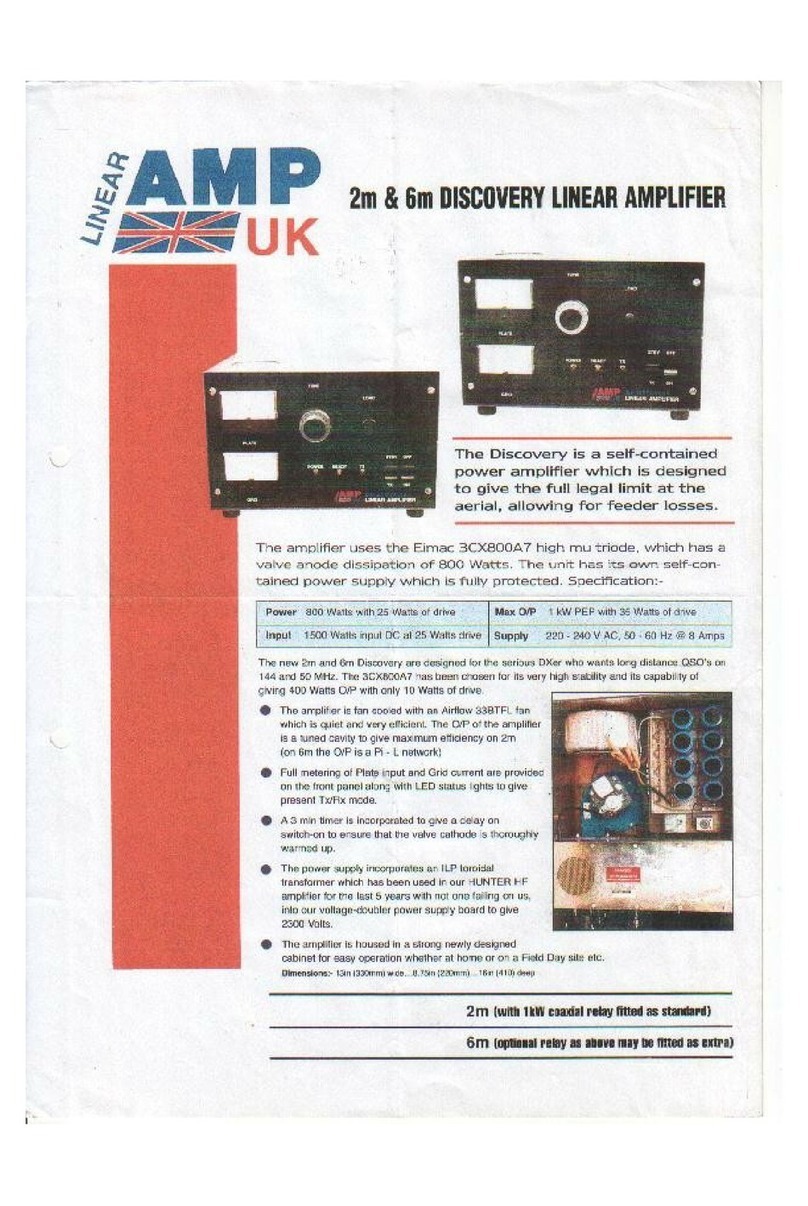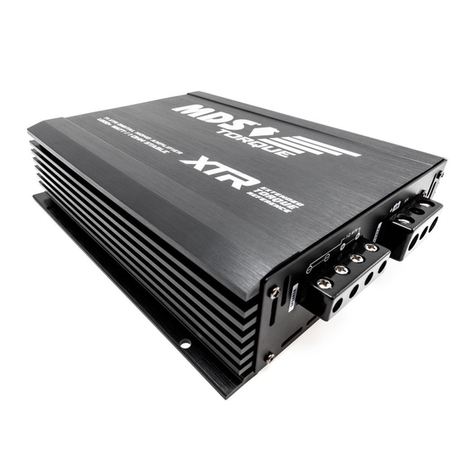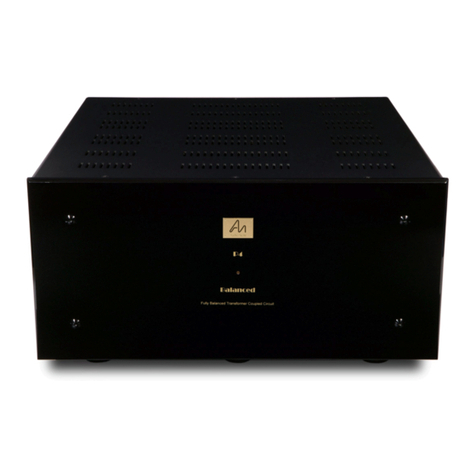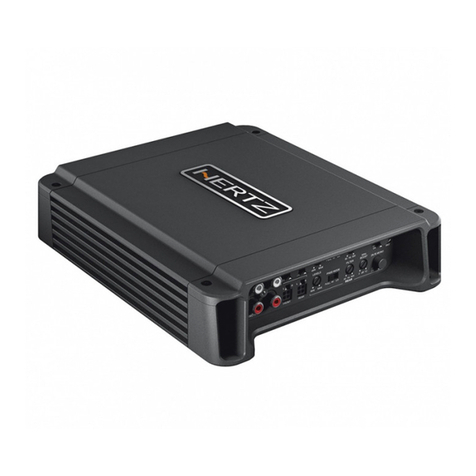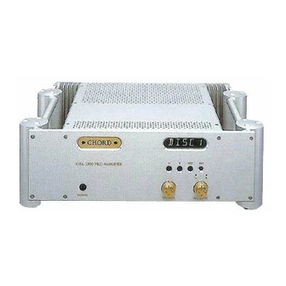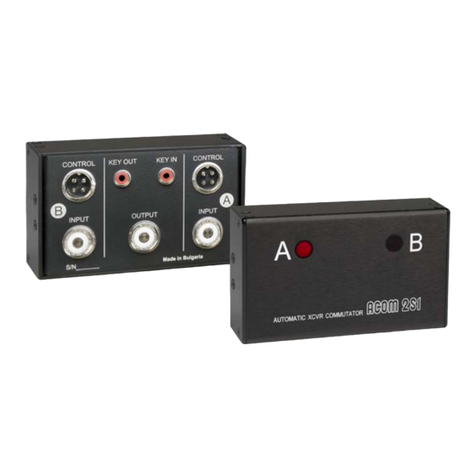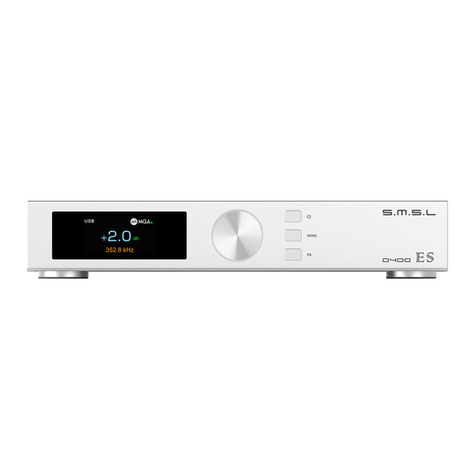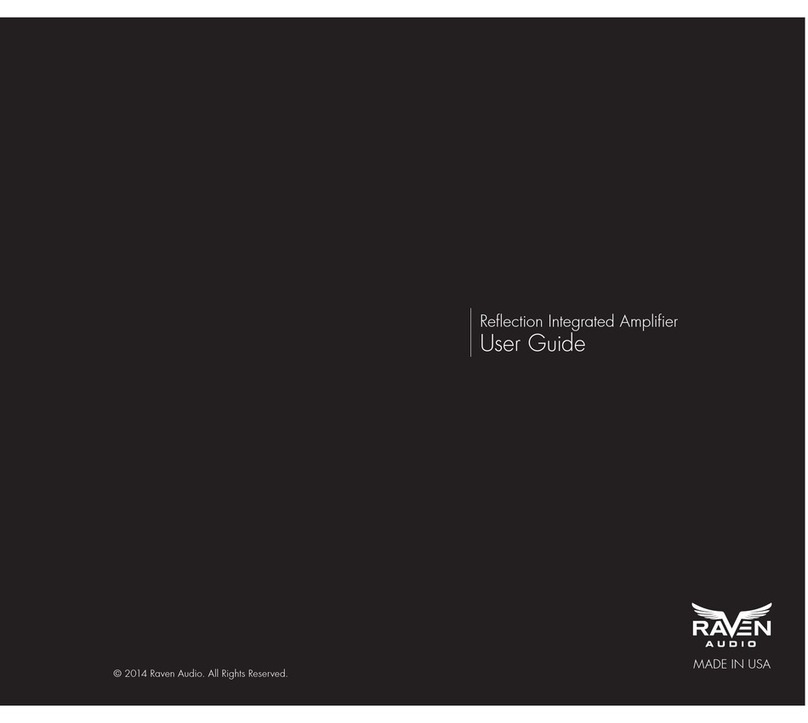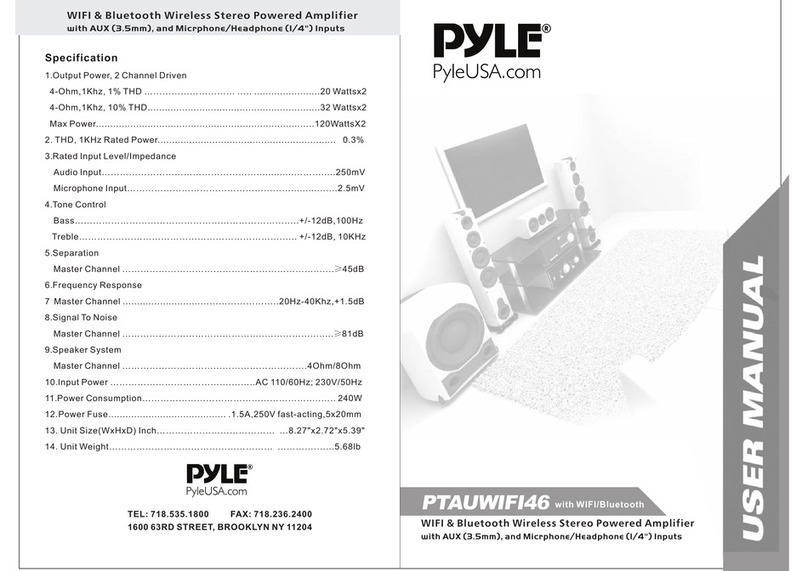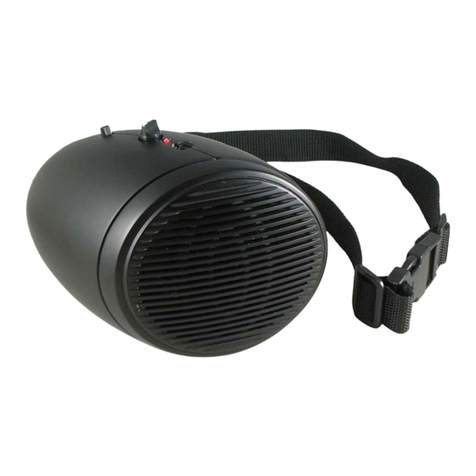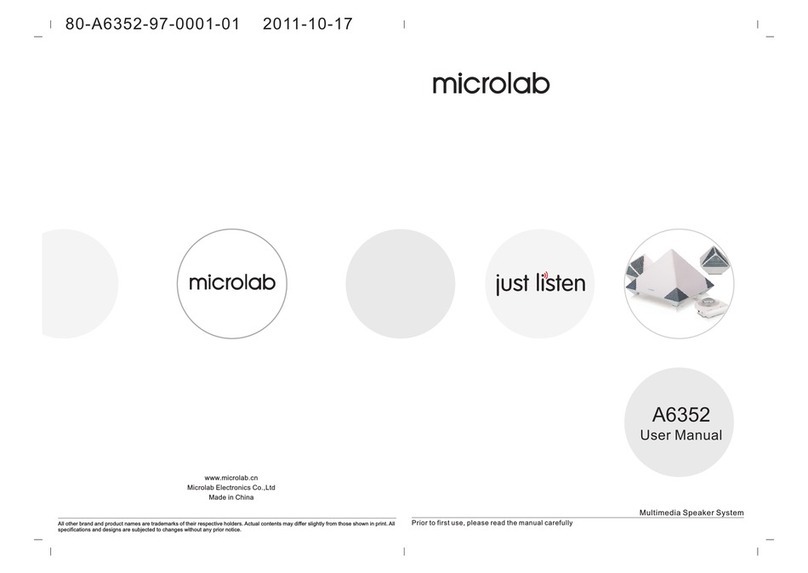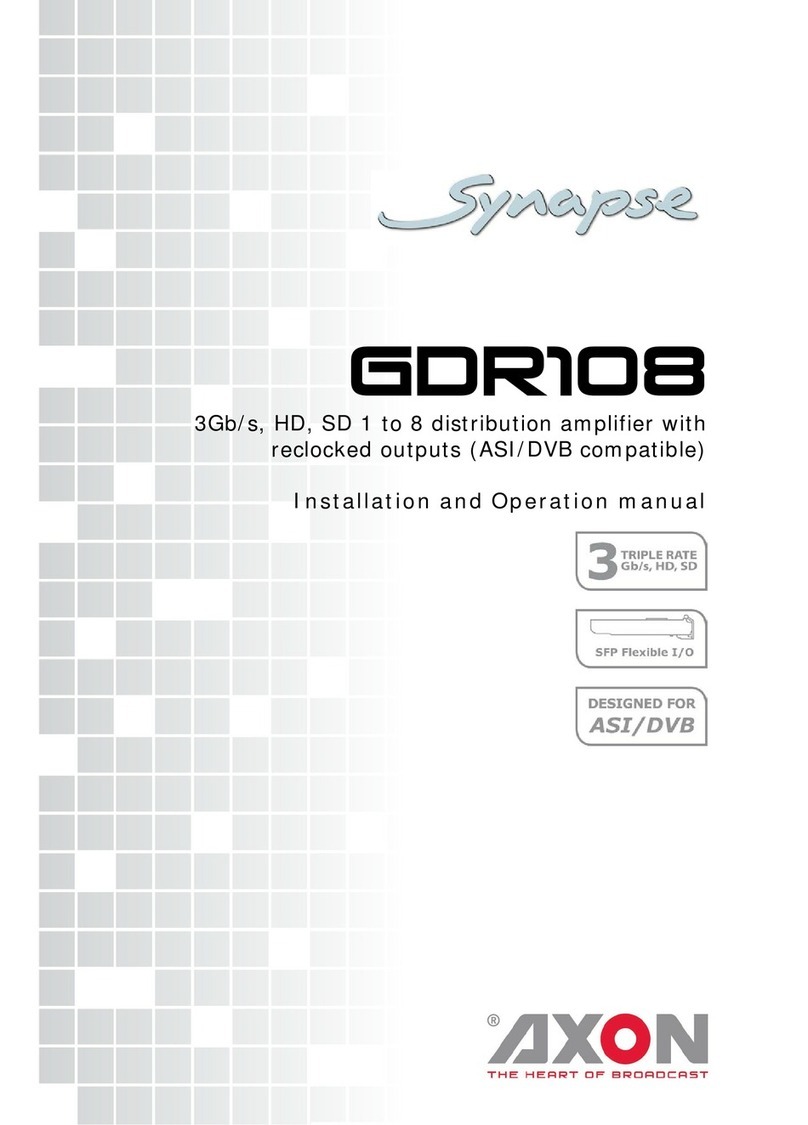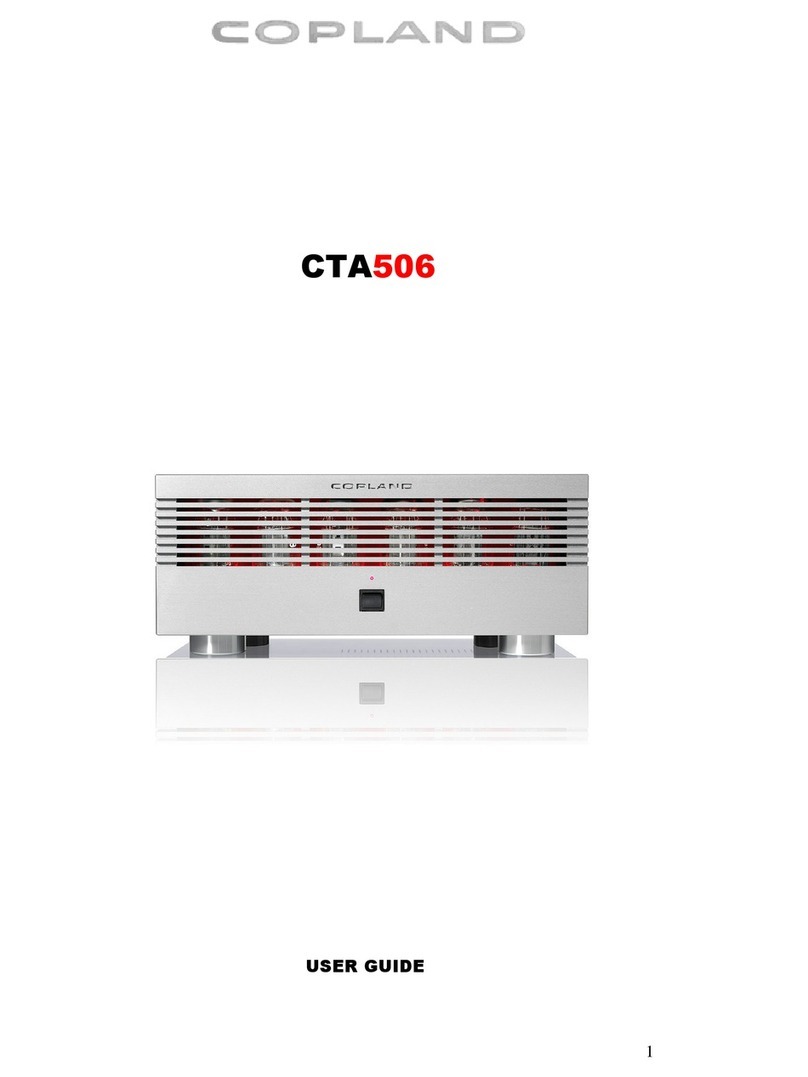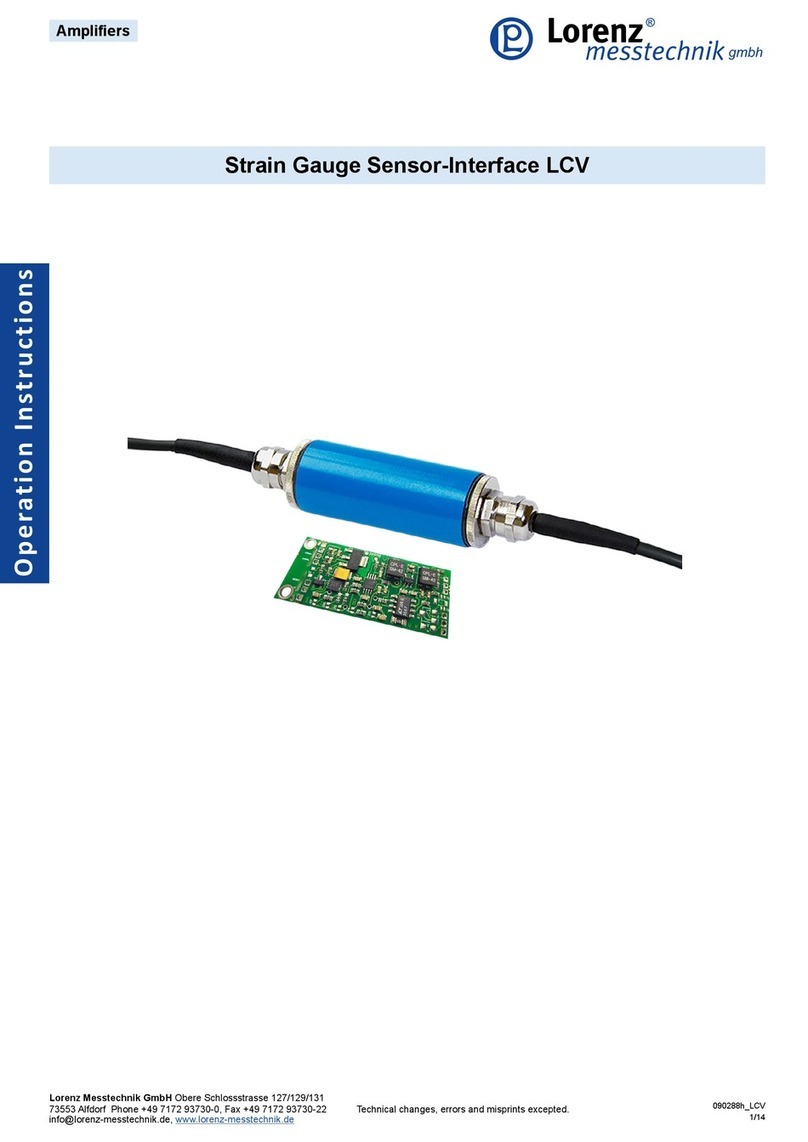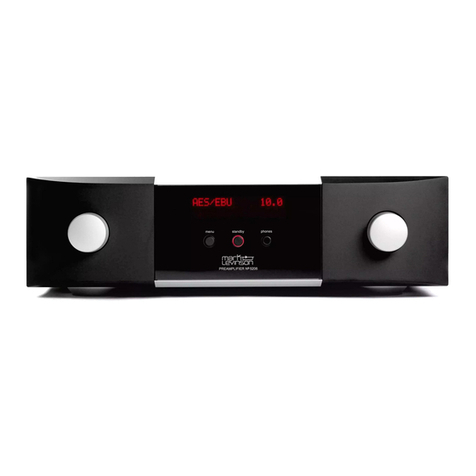Linear AMP GEMINI HF-1K User manual

Churchstoke,Montgomery,Powys,SY156TP,UK
Phone+44(0)1588620126e‐mail[email protected]
www.linearamp.co.uk
GEMINIHF‐1K
472KHz‐50MHzLinearAmplifier
SHORTFORMOPERATINGMANUAL

Congratulations on purchasing your UK made Linear Amp Gemini HF-1K
linear amplifier.
The amplifier covers all Amateur bands from 472KHz** to 50MHz (including
5MHz)
The amplifier is housed in an all aluminium chassis. Front and rear panels are
anodised finish. Top and bottom chassis panels are epoxy powder coated.
The major internal components sit on a 3mm internal aluminium baseplate
that ensures a robust and rigid unit and provides additional heat sinking. This
also enables the external panels to largely free of any fixing screws thus
enhancing its clean lines.
Control is via a full colour touchscreen display.
The amplifier has a diode switched tx/rx changeover circuit allowing full break-
in CW operation (QSK) at full output up to 50wpm.
The current version of this manual is available to download on our website at
http://www.linearamp.co.uk/ghf_software.html
Unpacking
The following items are included:
The linear amplifier itself
Mains power lead
Spare fuses
Phono plug for PTT
This manual
Please unpack all items on arrival and check carefully for any signs of
damage in transit. Please report back to us immediately if there are any
issues.
We recommend you keep the purpose made packaging in case you need to
transport your amplifier or return it to us for repair in the future. The
packaging is designed to allow transportation safely over standard courier and
postal networks.
**Operation on 472KHc requires the use of an external Low Pass Filter (not supplied)

Quick Start Guide
This document is written to provide a quick overview of the amplifier sufficient
to get you operational quickly.
Getting going
The Gemini HF-1K is essentially a fully automatic amplifier. Specifically the
amplifier automatically senses the frequency of transmission of the driving
transceiver and band switches wihout requiring either user input or any CAT
or other interface.
User control is via the touchscreen display. Behind the normal operating
screen are sub-menus for setting up antenna /band usage, power up status,
sounds, network control etc.
Other than physically connecting up and setting up which antenna socket
should be used for which band there are no other procedures required before
you use the amplifier for the first time.
Before you power up
Drive level
The most important consideration is drive level. In manufacture we will have
configured the amplifier to your requested specification. This will be for either
10, 25 or 50W input drive level for maximum output.
It is most important that you do not exceed the input drive level. Whilst the
amplifier has an input overdrive detector that will inhibit transmit if it detects
overdrive this cannot ever be 100% guaranteed to protect the LDMOS
devices. It is a fast acting circuit but damage can occur in a single frequency
cycle if over-driven sufficiently.
Damage to the amplifier due to over-driving is not covered under warranty.
Please therefore ensure that your transciever is configured correctly. We
recommend getting into the habit of a quick tx with the amplifier off-line to
check the output power of rig using your in-line power/vswr meter before then
turning the amplifier on. If your rig is configured to provide different power
levels for each band then take a minute to check that all bands are set to a
level at or below the amplifier maximum drive input level.

Positioning of the Amplifier
The amplifier should be positioned in such a way that cooling is not restricted
and away from direct sunlight. Air is drawn into the underside of the unit and
out of the rear and out of the top at the back. It is important that you do not,
for instance, stand the unit on or put loose paper underneath or on top of the
amplifier as this could cover the intake grills and restrict the cooling. Likewise
please ensure that the rear of the unit is not obstructed.
Connecting up
Connect the supplied mains power lead (note the amplifier is shipped with a
10A fuse fitted assuming operation will be on 200-260V AC. If you are
operating at 120V then you will need to fit the 20A spare fuse supplied and
ensure your supply is rated appropriately)
Connect your transceiver to the socket marked TRX.
Connect antenna(s) as required to the sockets marked A, B, C.
Take a ground on transmit connection from the transceiver to the phono
connector marked PTT (see PTT below).
Connect a Network cable (optional).
Connect 0dBm output (optional).

PTT
The amplifier has no RF switching built in. To put the amplifier into transmit it
is necessary to ground the centre pin of the PTT phono socket. Most
transceivers have a 'Ground on transmit' output that will need to be connected
to the PTT socket. The amplifier uses low level switching circuitry that will be
compatible with any transceiver or transverter 'ground on transmit' output. A
separate interface or relay circuit is not required.
Powering up
Mains power switch on the front panel to on.
The amplfier will boot up. The screen will initalise with the Linear Amp logo
and then after approximately 10 seconds ‘DX’ will be announced in CW and
the screen will change to the operating screen.
(The amplifier will boot up either in Standby or Run mode depending on how
you have set the software. If it powers up in Standby then press on the on.off
button (top right on the screen) once).
Antenna / Band set-up
The amplifier is supplied with three rear panel Antenna sockets marked A, B
and C. Each band has an antenna assigned as required. When the amplifier
is shipped all bands are set as default to use Antenna A.
Setting up of the band/antenna matrix is done via the touch screen.
To set this up either:
Press the settings button on the main screen and then Band/Antenna button
Or:
Press the area on the main screen bottom right where the antenna in use is
displayed (it will be showing A, B or C).
This will then open up the Band/Antenna selection screen:

Pressing on each band will show the Antenna currently set for that band. If
you want to change the Antenna just press the appropriate Antenna A,B,or C
as required. Settings are saved immediately.
Note this screen also serves as a manual band change screen allowing you to
manually select the band you require (so, for instance, if you change bands
on the transceiver and want to listen on another antenna without having
actually transmitted you can do so manually from here).
When set-up is complete pressing the return button returns you to the main
screen.
Once you start to tx then the amplifier will immediately change band
automatically if the transceiver is on a different band to the amplifier. (Note tx
is inhibited whilst you are in anything other than the main operating screen)
When the amplifier is turned off completely at the front panel power switch or
disconnected from the mains then Antenna A is selected as default. The
amplifier will allow up to 200W straight through operation (BUT remember to
reset your drive level before you use the amplifier again!)
Operation
Grounding the PTT line will put the amplifier into transmit. TX will be shown
highlighted in red on the display. Note the nature of the solid state output
switching circuit in the Gemini HF-1K is such that there is NO noise
associated with going to tx. The only time you will hear relays click is during
band change or antanna change.
Applying RF from the transceiver will result in RF output from the amplifier.
The display shows RF power out, Ipa (PA current) and VSWR as well as
Band, Antenna and temperature. Both peak and average RFout and Ipa are
shown. Numerically the peak value is shown.

Band selection
The Gemini HF-1K has fully automatic band selection. As you transmit the
amplifier detects the frequency of the tranmission, checks to see if it is within
the current band and if not changes the band of the amplifier automatically.
The chageover procedure is cold switched and occurs in a few ms.
The amplifier contains a list of valid frequency ranges. If the transmit
frequency is detected outside the valid range (ie out of band) then tx is
inhibited and a pop up ‘Out of Band’ warning appears
Note that if you intend to operate on 472KHz then you will need to provide an
external low pass filter with suitablt performance and rating for the power
output intended.
QSK
The amplifier incorporates a diode switching circuit allowing silent full break in
cw operation. The amplifier wil maintain an undistorted CW keying envelope
even at speeds in excess of 50wpm. QSK operation is an integral part of the
amplifier design and does not need to be selected on or off manually.
Cooling
The amplifier contains several temperature controlled cooling fans. In addition
there is one low noise fan that runs all the time. The main fans will increase or
decrease speed in linear fashion proportional to the temperature controlled
over a temperature profile pre-programmed into the temperature control
module in the amplifier. The main fans will not turn on until 40C and will then
ramp up over a non-linear profile to be at maximum at 65C heatsink
temperature. Fan speed control is automatic and independent of the tx/rx
state of the amplifier.
Protection Circuits
The amplifier has several protection circuits built in:
Overdrive
The amplifier monitors input drive level. If drive level is exceeded then the
overdrive circuit is activated inhibiting the PTT, causing the amplifier to lock
out onto receive mode and an overdrive trip pop-up warning will be shown.
You can clear the trip by touching the trip pop-up on the screen.
Check your rig!

VSWR
The amplifier has a high VSWR lockout circuit built in. If the output VSWR
exceeds 2.5:1 then this will be activated causing the high VSWR warning pop-
up to appear on the screen. The amplifier will go to receive. You can clear the
trip by touching the trip pop-up on the screen. PTT is inhibited until the reset is
done. If the rig is still in tx then the amplifier will not turn back on until you turn
the rig back to rx and then tx again.
Check why it tripped! - Antenna fault? Cabling fault? Wrong antenna
selected? No antenna selected?
This trip has been designed to be deliberately invasive as VSWR faults should
be investigated immediately.
Over Temperature protection
If the temperature exceeds a higher threshold level that could potentially harm
the amplifier then an Over Temp lockout will occur. This will inhibit the PTT,
lock the amplifier on receive and the Over Temp warnign pop-up willl appear.
Once the temperature drops sufficiently the amplifier will enable PTT again
bus as with other trips you will have to cycle the rig off and back onto tx if it is
still transmitting.
Note that if you are getting Over-Temp lockouts then the first thing to check is
that the air intakes under the amplifier and/or the rear outlet are not
obstructed.
Other Functions on the touchcreen
There are various other functions available via the touchscreen. Pressing the
settings button (below the on/off button on the RHS) enters a subscreen with
a menu structure thus:
Band/Antenna
Options
Power up either in Standby or Run mode
Sound On or Off (default On)
Brightness of display (default Maximum)
Network
IP Address
Enter IP address
IP Mask
Enter IP Mask
DHCP Off or On - active network connection activity is shown.

0dBm output
The Gemini HF-1K is fitted with a low level 50R signal ouput marked 0dBm on
the rear panel. This samples the RF output from the amplifier and can be
used to monitor signal quality or for integration as a predistortion output for
SDR transceivers.
The level is set at 0dBm for 100W output. This level was chosen as it is
intrinsicly safe to use diectly with signal analysis equipment and is also the
correct level to be udes directly as a Pure Signal predistortion source for Anan
SDR’s.
In order to maintain the accuracy of the main directional coupler in the
amplifier the 0dBm output should be terminated in a 50R 1W or greater load
when not in use (a 1W load is supplied and fitted).
Network / Remote operation
The Gemini HF-1K amplifer is capable of full remote control operation and
monitoring over a network. This allows the user to either monitor the amplifier
locally on a computer in the shack or remotely from any other location with
suitable network linking.
All functions and alarms are accessible using the remote software other than
the main power on/off switch on the front panel.
The software runs on Windows 7 or higher and is available for download from
our website:
http://www.linearamp.co.uk/ghf_software.html
Firmware Updates
From time to time we may issue firmware updates for the amplifier to improve
or enhance functionality and reliability of operation.
The firmware version currently in use is displayed on the amplifier under the
Linear Amp logo during power up.
Firmware is updated over the network connection by placing the machine in
‘Prog’ mode and then using the remote software (see above) firmware upload
function to select and upload the new firmware file.
To enter ‘Prog’ mode it is necessary to push and hold the ‘Prog’ button on the
rear panel of the amplifier whilst powering on the computer. The ampliifer then
powers up in Prog mode and ‘Set Network’ is displayed on a blue
background. Follow the instructions on the software for firmware uploading.
Once the firmware upload is complete the amplifier will reboot automatically
and then can be used normally. Check that the correct Firmware version is
shown on power up.

SPECIFICATIONS
Gemini HF-1K
Valid operating frequencies: 460 – 479kHz*
1.8 – 2.0MHz
3.5 – 4MHz
5.0 – 5.5MHz
7.0 – 7.3MHz
10.1 – 10.2MHz
14.0 – 14.4MHz
18.0 – 18.2MHz
21.0 - 21.5MHz
24.8 – 25.0MHz
28.0 – 29.7MHz
50.0 – 54.0MHz
*when used with an external low pass filter unit (not supplied).
Power output : >1 kW at 1dB gain compression (400W+
on 460-479KHz)
Power input: 5, 10, 50W customer specified
3rd order IMD distortion: better than -30dB at 1kW
11th order IMD distortion: better than -70dB at 1kW
Harmonic suppression: better than 70dB (all harmonic
products)
Input VSWR: better than 1.5:1
Load VSWR tolerance: Max 2.5:1 high VSWR trip

CERTIFICATE OF CONFORMITY
The DX Shop Limited / Linear Amp UK Ltd hereby declare that the following
products,
Linear amplifier Gemini HF-1K
fully meet technical specifications according to the following EU directives:
06/95/EC, 2004/108/EC and 99/5/EC:
EN 301 783-1 V1.1.1 (2000-09), EN 301 783-2 V1.1.1 (2000-09
EN 301 489-1 V1.6.1 (2005-09), EN 301 489-15 V1.2.1 (2002-08)
EN 60950-1: 2006
All necessary test procedures have been successfully passed.
Manufacturer and authorized representative:
The DX Shop Limited
Churchstoke
Montgomery
SY15 6TP
Authorized representative of above
Roger Banks
Director
May 2018

WARRANTY
Linear Amp UK Ltd warrants to the original purchaser that this product shall
be free from defects in material or workmanship for 24 months from the date
of the original purchase. LDMOS devices are excluded from this warranty.
Notification should be given as soon as possible after discovering a possible
defect. Carriage charges for any parts or units submitted for replacement or
repair under this warranty must be paid by the purchaser.
Correct maintenance, repair and use are important to insure proper
performance from this product. Carefully read this operating manual.
This warranty does not apply to any defect Linear Amp determines is caused
by
(1) improper maintenance or repair, including the installation of parts or
accessories that do not conform to the quality and specification of the original
parts;
(2) misuse, abuse, neglect or improper installation;
(3) accidental or intentional damage;
(4) acts of God.
Linear Amp is not responsible for damage to other equipment or property or
any other consequential or incidental damage of any kind.
Linear Amp UK Ltd is a trading style of The DX Shop Limited, Registered in
England & Wales, Registration No 07782419. www.thedxshop.com
SUPPORT
The DX Shop offer full aftersales support on this amplifier. Please contact us
either by email to esales@thedxshop.com or call is on +44 (0)1588 620126
Copyright The DX Shop Limited 2018
E&OE
Table of contents
Other Linear AMP Amplifier manuals
